Assistive Devices for Arthritis of the Hands: Protecting Your Joints
Adapted from a presentation at the Living with RA Workshop
For people with arthritis in the hands, many of our daily activities that we frequently take for granted are challenging, often due to pain and weakness. Assistive devices (and related technologies known as “adaptive equipment”) help us perform many of our daily tasks with less pain, improve our level of independence, and allow us to preserve the health of the joints in our hands.
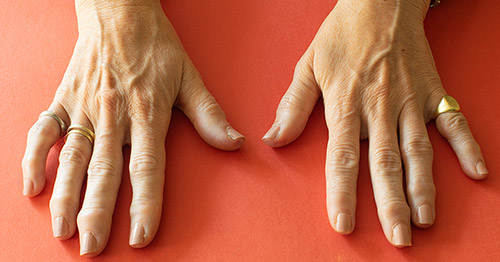
To further explain, the act of unlocking a door with a key and turning the doorknob can be difficult and/or very painful. We have to evaluate how our actions impact the health of our joints and implement joint protection strategies to preserve our hands.
Learn why assistive devices are beneficial and how they can aid with activities that are often too painful to complete by going through each of the topics below.
- What do I need to know about arthritis of the hands?
- What is arthritis?
- Which joints in the hand are most affected by arthritis?
- What is assistive technology?
- Is there a better way to do manual tasks that preserve our hand and finger joints?
- What are the key principles of joint protection?
- Motor functions of the hand to avoid
- Assistive devices and your joints
- Considerations for maximum joint protection
- Take-away tips
What do I need to know about arthritis of the hands?
Small joint protection is an important topic to discuss, both for healthy finger joints, as well as joints affected by various forms of arthritis. As we begin to unlock the delicate mysteries of the small joints of the hand and calculate the risks our actions place on the health of our joints, we need to understand what these joints are that we are trying to protect as well as what assistive devices are.
What is arthritis?
Our joints are lined with cartilage that allows our bones to move without restriction and pain. This cartilage also allows our joints to handle compressive forces that we place on them with everyday activities.
Osteoarthritis is a chemical and mechanical breakdown of this cartilage, which can cause pain resulting in limited motion of that particular joint. Although the exact cause is not known for this deterioration, risk factors can include age, heavy manual labor, traumatic injury, and obesity.
Rheumatoid arthritis is an inflammatory autoimmune condition where the inflammation in the joints causes the deterioration of the cartilage.
Which joints in the hand are most affected by arthritis?
Although arthritis can develop in many of our joints, the ones primarily affected in the hand are:
- the interphalangeal joints of the fingers (shown in red in the diagram below)
- the carpometacarpal joint, also known as the basal joint, between the first metacarpal in the thumb and the trapezium, a carpal bone in the hand (shown in green in the diagram below).
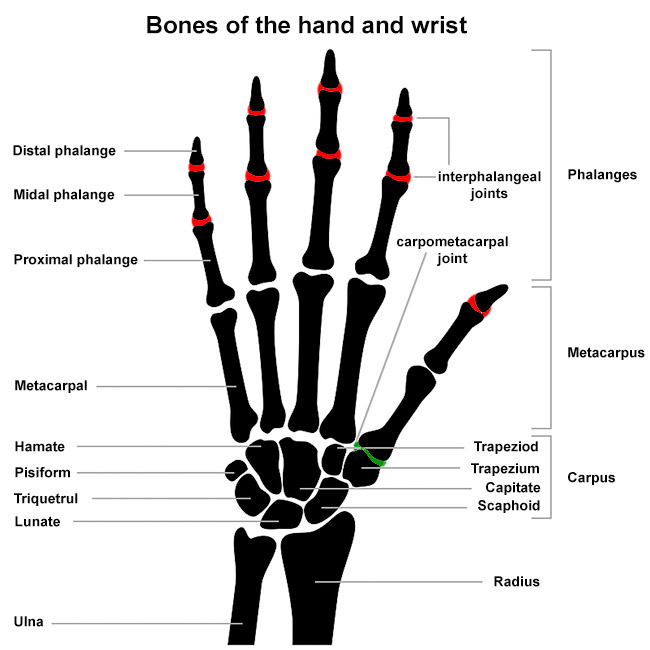
Illustration of the bones of the hand and wrist showing the locations of joints commonly affected by arthritis.
What is assistive technology?
Assistive technology is any item, piece of equipment, product, or system, whether acquired commercially, off the shelf, modified, or customized, that is used to increase, maintain, or improve functional capabilities of individuals with disabilities. This is the definition as written in the Technology Related Assistance for Individuals with Disabilities Act in 1988. The term is commonly used interchangeably with similar ones, including the following, although there are some distinctions:
- assistive devices
- adapted equipment
- adaptive equipment
The key distinction between “assistive” and “adaptive” technology is that the former is designed to help anyone perform certain daily tasks with ease and added protection, while the latter is designed to help people with specific conditions perform certain tasks with increased independence.
Is there a better way to do manual tasks that preserve our hand and finger joints?
There are many assistive technologies on the market to help people perform everyday tasks while reducing stress on the small joints of the hands and fingers.
The goal of assistive devices is to protect joints from stress and create ease of completion for an activity. Assistive devices are designed for the arthritic hand, whether the arthritic changes are present or not. They help alleviate the compressive forces we naturally place on the small joints of our fingers while performing simple tasks such as writing or chopping vegetables.
What are the key principles of joint protection?
There are two things to consider when using assistive devices: One is external pressure and the other is internal pressure. Both factors determine how the assistive device or the required motion of an activity is going to affect your body and your joints. Here, we will discuss primarily the small joints in our hands.
External pressures
External pressures are forces that are placed on our joints through the use of odd shaped objects, slippery surfaces, tightly fit objects such as lids and caps, small handles/objects such as kitchen and workbench tools, and cold items. Further examples include opening medicine bottles or a brand-new jar, holding small and thin kitchen utensils, as well as working with small screws with a thin-handled screwdriver. All of these different types of tasks that we may perform daily place a lot of stress on the smaller joints in our hands because it takes more power and work for our hands to perform these activities.
Internal pressures
Most joints tend to become "distressed" in a flex or bent position. Gripping objects tightly can create harmful internal tension around your joints as a result of the power used by the muscles within the hand. Additionally, poor placement of the hand on an object can stress the ligaments that help support your joints.
For example, you might notice if you’ve been driving in your car for a little while, you will try to open your hand and it will feel stiff because you’ve been in a flexed or bent position for a prolonged period of time. Sustaining a tight grip will eventually cause these muscles to fatigue and as a result these muscles won’t be able to support the joints in the hand any further, thus affecting the actions required to continue performing the task properly. These are the reasons that lead the joint to become distressed. Additionally, poor placement of the hand can affect the amount of stress on our ligaments. For example, if you reach for something in a small space that leaves you to only have your fingertips on the object, the amount of stress on those small joints are much greater than if you had a better hold of it with your whole hand, or two hands.
Motor functions of the hand to avoid
Ulnar deviating pressures
There are some motions that cause unwanted stress in the hand and wrist that you want to avoid when you are using any type of assistive device or other devices, one being ulnar deviating pressures. Ulnar deviating pressure refers to pushing fingers sideways, away from the thumb towards the pinky. Common actions that cause this are:
- holding a knife
- lifting plates
- lifting saucepans
- opening jars
- turning a doorknob
- pushing in a drawer
- wringing out wet clothes
To further explain, when lifting up a plate or saucepan, the weight of the object will push your fingers towards your pinky. The same stress occurs while opening or closing a jar as well as turning a doorknob. Luckily, there are activity modifications and assistive devices that can be used to avoid these patterns of movement. You can modify the activity of opening/closing jars by using your left hand to open them and switching to your right to close them. Additionally, there are various jar opener devices available to reduce the stress on your hand during this task. To modify the way in which you open doors, you can install lever-style doorknobs, which will be discussed in further detail.
Activities involving tight grasp
As discussed previously, grasping objects tightly also causes a lot of pressure on our joints. Ways to avoid using a tight grasp include choosing kitchen or workshop tools with larger, rounded and/or or contoured handles. Additionally, you can use a spiked cutting board to hold vegetables/fruits while cutting to perform food prep. This helps free your stabilizing hand from having to hold the food down tightly while you cut into it. Another modification is using both hands while performing certain activities, such as holding onto a mug with both palms rather than using the fingers to hold onto the handle.
Sustained manual positions
There are two different muscles in the hand, extrinsic and intrinsic muscles. The extrinsic muscles are larger, originate in the forearm and insert down in the hand. The intrinsic muscles are smaller and originate within the hand. Together, these muscles are crucial to the performance of what we ask our hands to do on a daily basis. Sustained positioning should be avoided because maintaining a prolonged position of the hand can tire and stress these muscles. This, in turn, can also cause compensatory patterns of movement (changing the way you move to avoid pain, and in some cases create awkward positions that may cause further damage). To preserve the health of the muscles is to condition and strengthen them, as well as reduce unnecessary strain from maintaining a strong grasp for too long.
For example, if you read for hours at a time while holding an electronic reading device or book with your fingers in a fixed position, you’ll notice that it will eventually start to tire the small muscles in your hand. A better way to do this is to place the device or book down on a table or in your lap. You could also limit reading to 20- to 30-minute increments or one book chapter at a time.
Another way to avoid sustaining activities before your muscles tire is to pause the task being performed and then resume it later. For example, if you have a stack of clothes to iron, a sewing project, or if you want to garden because it is perfect weather and you’ve got two hours before it’s going to rain. You don’t want to do any of those tasks for two hours straight because you will tire and fatigue the joints and muscles out, which can possibly last for the next couple of days. It is better to allot a chunk of time for the activity and then take a 20 minute to half an hour break before resuming. You’ll notice that you are going to preserve the muscles and small joints as well as demonstrate better performance.
Assistive devices and your joints
Use devices with lever arms to do everyday activities with less pain
There are numerous devices that you may consider purchasing, such as items with lever arms. Increasing the leverage helps reduce the effort required to perform everyday tasks. One example is to replace a standard doorknob with a lever arm door handle. This type of door opener allows you to increase the torque, which is the force required to turn the door latch by simply tapping down on the lever-arm handle. Performing the same function using a standard doorknob requires you to maintain a grasp to turn the knob. This requires much more effort and can stress those smaller joints further.
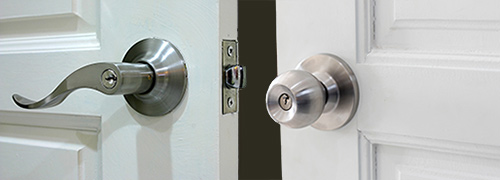
Lever arm door handle versus a standard round doorknob.
Lever arms are not just for doorknobs. Other devices that include a longer lever arm give you more stability at your core and require less bending and stretching. Anything that extends a handle longer than its typical length may be considered a lever. For example, you may have seen long-handled reacher tools.
Other examples of lever arm devices include:
- Ice tongs – Using tongs instead of just your fingers to pick up objects permits you to use your bigger hand muscles and place less stress on the smaller ones.
- Pants/skirt hanger − Hanging up pants and skirts using typical store hangers with little pinching clasps can cause strain. There are special hangers available with special releases to open and close them. These allow you to use your whole hand to clip it together and hang your pants or skirt, rather than just your fingers.
- Grip wrench − A grip wrench uses a large loop of rubber (in varying sizes) as a lever. This uses a similar principle as the lever arm door opener to help you open and close jars, bottles and other containers with twist lids using your larger hand muscles with less effort.
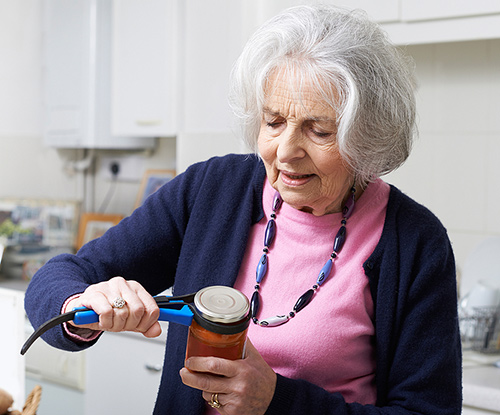
- Bottle and jar openers with levers: various jar and bottle openers with levers are available to purchase online. They decrease the stress on your hands and allow you to use your larger joints and muscles to increase the ease with opening containers. One opener in particular that assists with both jars and cans is a 5-in-1 bottle and can opener.
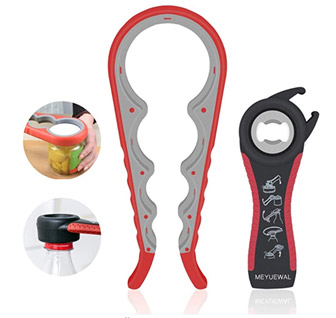
Increased diameter and other assistive properties
Using large-grip tools that have an increased diameter of their handles will decrease the amount of grip required to do an activity. They preserve the smaller joints as well as reduce fatigue from static holding. The image below shows examples of large-grip kitchen tools, including a jar opener. It uses the same leverage principle as a grip wrench, although it does not provide quite as much leverage.
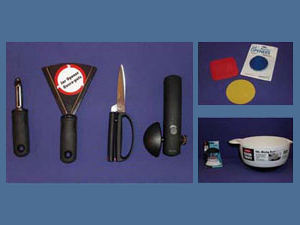
It is important to keep tools, scissors, and knives sharp to avoid any drag and reduce the effort required to cut things. Dull tools require you to increase the force to perform the task.
Sticky surfaces or overlays on everyday objects can minimize slippage and reduce the amount of force needed to handle and manipulate them. There are rubber-coated bowls and plates available, for example, which prevent them from sliding around on the table but also permit easier handling.
Writing often becomes challenging with arthritic hands because of the stress placed on our smaller joints to hold a pen when writing. To reduce the pain, one can purchase built-up pen grips to increase the diameter of the pen, ultimately decreasing the effort and strain on our hands. Also, there are various ergonomic pens designed to increase the ease of performing writing tasks, such as PenAgain, shown here.
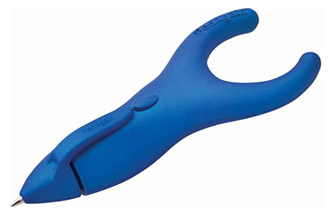
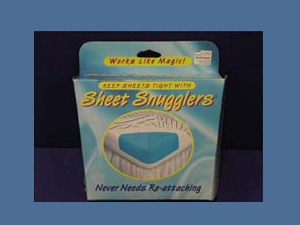
There are many other assistive devices that exist that can help create ease throughout many of our daily, vocational, and recreational activities. The items mentioned above are only a few to create awareness of some of the devices that are available to purchase.
Using assistive devices properly to protect your small joints
As seen above, assistive devices come in many shapes and forms, and they have multiple benefits that can make an impact on our daily lives. Individuals with arthritis are no stranger to morning stiffness and flare ups, which can create significant difficulty when completing tasks that we often take for granted. Assistive devices can help make these tasks easier and allow us to regain our independence. The devices can also prevent unnecessary stress on healthy joints and alter the biomechanics of unaffected joints. When purchasing assistive devices, it is important to know how these devices work to prevent inappropriate use that may increase the force on our joints. Additionally, one device that works for one person may not necessarily work for someone else.
Using alternative joints to perform tasks
Whenever possible, consider using either the larger joints of the upper extremity, or even other parts of the body to accomplish the stressful task. Try to avoid using your hands when appropriate. For example, when carrying grocery bags try to hold the bags at your elbows versus in the hands. Additionally, if carrying a purse try to use a small backpack in place of a purse or ensure it has a long strap to carry from the shoulder.
Using splints as assistive devices
A splint is also considered to be an assistive device because it can be used to support or substitute for limitations of strength and range of motion. Splints can be either custom fabricated by a hand therapist or prefabricated and available to purchase in stores or online. Various splints exist for the wrist, the hand as a whole, or for individual joints of the finger. Since there are many different designs and styles of splints which all serve different purposes, it is important to know that one splint may work for one person but may not work for you. Additionally, if one style does not work for you, another style may.
Examples of splints
- Oval-8 splint: prevents the middle joint from hyper-extending during activities or it can maintain middle joint extension to prevent the distal joint from hyper-extending.
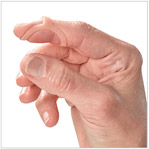
- Silver ring splint: provides a long-term alternative to address hand presentations such as swan neck or boutonniere deformities.
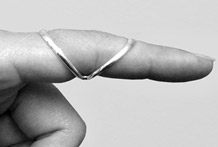
- Prefabricated wrist splint: provides mild-mod wrist support and are typically made of a neoprene material which provides neutral warmth. This neutral warmth is excellent for flare ups. These splints are also good for people who have wrist instability. Their wrists are a little bit loose and it can be difficult for them to get a good grip or any sort of joint laxity without the wrist support.
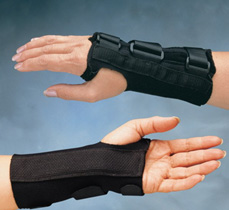
- Ulnar drift splint: prevents ulnar deviation of the metacarpal joints of the index, middle, ring, and small fingers.
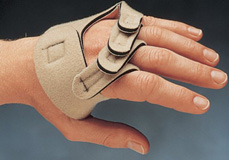
- Hand-based thumb spica: supports and stabilizes the carpometacarpal (CMC) joint of the thumb.

Since there are various designs and purposes of splints, it may be beneficial to locate an occupational therapist, a physical therapist, or a certified hand therapist to help you identify a splint that will fit and benefit you most depending on your presentation and difficulties. Purchasing a splint that fits poorly can put more stress on your other joints, so it is important to choose the right one. A professional can help guide you through this process. With some prefabricated splints, you need to be careful if it includes an internal hard piece. At times, you may be trying to work against that hard piece, causing you to work much harder than necessary
Considerations for maximum joint protection
When you get an assistive device, questions ask yourself these questions:
- Does the device reduce pain, stiffness, or joint stress? If it does not then maybe it’s not the right device for you.
- Does the device reduce energy or time expenditure? If you are spending a lot of time setting things up? For example, if it takes you five minutes just to put this around a jar just to open it well then maybe this is not the right device for you and there could be a different product that can be more efficient and effective.
- Is the device convenient, easy to use and transportable, or does it need to be bolted into something or do you have to walk halfway across your house in order to use it?
- Is the device needed only in the morning or on bad days?
- Does it substitute for an activity that can be done safely without it? Sometimes if you look at the way you are doing an activity you can find a different way to do that same activity very safely and you don’t have to purchase any assistive devices.
- Does the device stabilize hyper-mobile joints? Always make sure that you keep your healthy joints healthy.
Examining and, at times, reconfiguring your environment is important. The arrangement of objects in your environment can encourage healthy use of joints.
When you look at the kitchen counter, are you constantly reaching through or over into the corner to get that spatula? Do you have to stabilize your body by pushing onto a counter? If so then you are probably putting stress on your joints without even realizing it. Arrange your objects on the counter or in your area of work according to how often you use them. A good assistive device that is in a poor location may cause more stress and therefore be less useful. An example, if you frequently use an electric can opener, but it is placed in a cluttered environment or tucked away in your cabinet, it may be more stressful on your joints to continually retrieve it, ultimately reducing its benefits. Be sure to observe your environment and make positive changes accordingly.
Always use the best joint choice available for a chosen activity, such as your shoulders or elbows. Become aware of your body mechanics. Always support your body, standing up straight, and have good posture and stability before you do an activity. Respecting your body should be your number one goal. If you have pain with an activity you need to stop and take regular rest periods to conserve your energy.
Take-away tips
Remember these important principles:
- Use the strongest joints available for any activity (such as shoulders and elbows).
- Choose adaptive devices appropriate for your hands and activities.
- Become aware of good body mechanics.
- Respect pain.
- Take regular rest periods.
- Conserve your energy.
Practice mindful self-care:
- Make a mental list for yourself of all the things you aren’t able to do well, and think about how you want to do them. Is it because an object is too small or too tight? This mental list will help you remember what properties you need to look for when you are looking for assistive devices.
- Be consistent about using assistive devices to prevent unnecessary stress on healthy joints. Best practices may vary from person to person. For some people with rheumatoid arthritis or other type of inflammatory arthritis, assistive devices may only be needed during flares. If you know you are having a flare up, then make sure to use these devices at that time. Others may need only to use assistive devices in the morning, because that is when they experience most of their symptoms. For other individuals, it may be better to always use these devices, whether there is a flare up or not.
- Remember that devices aid the biomechanics of unaffected joints. If it is just your thumb that is affected, and you are coming up with different ways to do things, you may be changing the normal function of your adjacent fingers. Being aware of inappropriate use can prevent you from causing increased forces on other joints. Watch your hands while you are doing something; if you think your hand or fingers are bending the wrong way then you probably are increasing the force on a different joint or even the same joint.
Updated: 2/8/2023
Authors
Related articles
Rheumatoid Arthritis Success Stories
Originally adapted from a 2003 presentation by Trish Pelc, then an occupational therapist and certified hand therapist at Hospital for Special Surgery.
References
- Beasley J. Osteoarthritis and rheumatoid arthritis: Conservative Therapeutic Management. Journal of Hand Therapy. 2012;25(2):163-172. doi:10.1016/j.jht.2011.11.001.
- InformedHealth.org [Internet]. Cologne, Germany: Institute for Quality and Efficiency in Health Care (IQWiG); 2006-. How do hands work? 2010 Aug 31 [Updated 2018 Jul 26]. Available from: https://www.ncbi.nlm.nih.gov/books/NBK279362/. Accessed December 4, 2022.
Product Information
- 3-Point Products Innovation by Design. 1610 Pincay Court, Annapolis, MD 21401. 1-888-378-7763. http://www.3pointproducts.com/
- Good Grips oxo ®. 1-800-545-4411 https://www.oxo.com/.
- Silver Ring Splint Company. P.O. Box 2856, Charlottesville, VA 22902-2856., 1-800-311-7028. http://www.silverringsplint.com/
- North Coast Medical, Inc., 18305 Sutter Boulevard, Morgan Hill, CA 95037-2845, USA. 1-800-821-9319. https://www.ncmedical.com/
- Medical Specialties, Inc. 4600 K Lebanon Rd., Charlotte, NC 28227. 1-800-582-4040.


